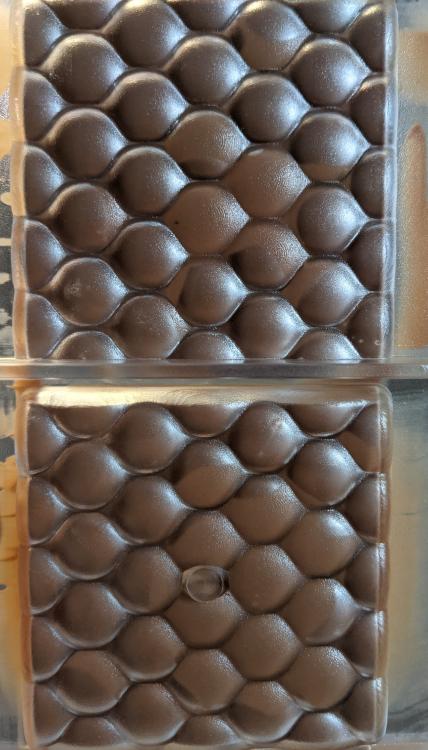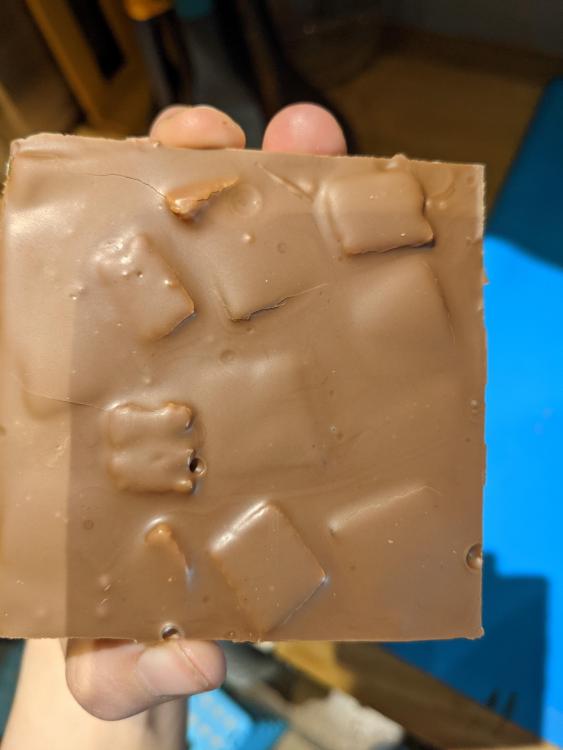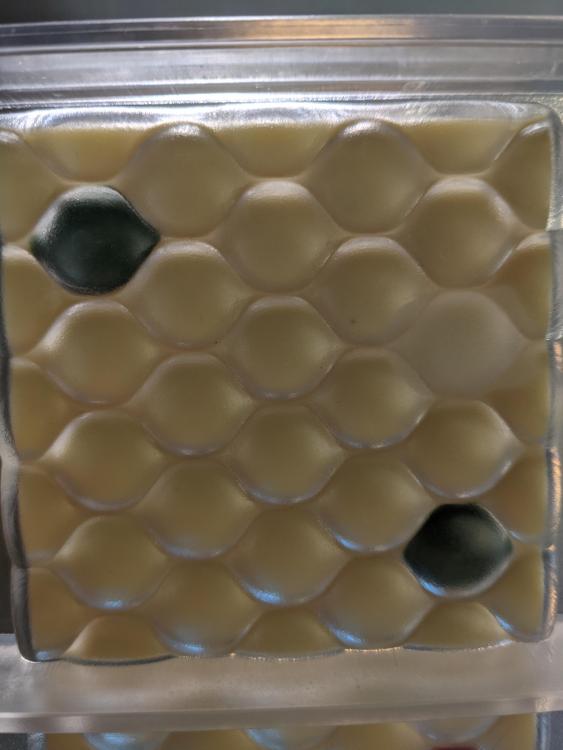
cc.canuck
participating member-
Posts
49 -
Joined
-
Last visited
Content Type
Profiles
Forums
Store
Help Articles
Everything posted by cc.canuck
-
An update on this in case someone else finds themselves in this same very specific situation: peanut brittle was the answer!
-
Hoping more experienced confectioners can help me to think of an English toffee-type confection to go into a white chocolate bar for a crunch line I'm working on. I've tried English toffee, treacle toffee (the skipping stones from Greweling), and honeycomb and they've all just been far too sweet. I was going to try a peanut brittle inclusion next or perhaps Greweling's buttercrunch but thought I would seek some guidance first.
-
Made another batch, putting more chocolate in to coat the mould, and had no release problems at all. Thank you for your spot on guidance!
-
That point about thickness may have something to do with it. I should have said this in the original post but what I did for these bars was basically line the mould with a thin layer of chocolate, place my inclusions on top, and then pour on the remaining chocolate. I was already planning on pouring in more chocolate to line the bars in future because the system didn't work perfectly. Perhaps that process is the culprit.
-
Yesterday I made two solid milk chocolate bars with inclusions (squares of caramel and bits of shortbread). Like I usually do, after filling the moulds I let them sit out for 15 minutes, then popped them in the fridge for 15 minutes more, then left them to continue setting at room temperature. I couldn't tell you how long it normally takes bars like these to fully release for me but when I checked these bars over 12 hours later they still hadn't fully released, which has never happened before. My question is were these bars likely doomed from the start or is there something I could have done in the cooling process to help them to fully release? They were incredibly full of inclusions, which maybe could have been a factor, or maybe the tempering wasn't quite right. Hoping an expert here can shed some light!
-
I'll be brave and give them a go, then.
-
Follow up question: have you ever made the chocolate variation of his caramels? The idea of putting the chocolate in at the start frightens me.
-
Brilliant. Thank you for all of this! I'm going to be able to dip them today but good to know there is a bit of flexibility there.
-
I've literally just made a batch of Greweling caramels (the condensed milk version) and am looking for some advice about storage. I'm going to be dipping them in chocolate at some point this week. Presumably the earlier the better but how long would the caramel last uncut and undipped? And I suppose I should also ask how long they will last dipped just in case we don't eat them all immediately. Thank you in advance.
-
Has anyone made the chocolate chip, coffee, and passion fruit cake? I've made pretty much every other layer cake in this and the All About Cake book but have always been a bit wary of that one.
-
Warming a mold with small amount of colored cocoa butter
cc.canuck replied to a topic in Pastry & Baking
Thanks all! My hairdryer can go back to being completely useless again then. -
This is incredibly helpful, thank you! I'll follow this next time.
-
Warming a mold with small amount of colored cocoa butter
cc.canuck posted a topic in Pastry & Baking
I couldn't think of a better way to word that! I'm experimenting with adding a very small amount of cocoa butter decoration onto bars I'm making and am not sure whether I should heat the moulds up with a hair dryer as I would for completely bare moulds or just abandoning this step. I would avoid blowing directly onto where the cocoa butter is as much as possible. Thoughts? -
I wonder if I am over-concerned about burning my chocolate and could do with leaving it alone a little bit. I'll try scaling back the amount of stirring next time and see what happens. Or I could do the whole process and a vibrating table!
-
Thank you for all of the advice you've given so far. Really appreciate you all taking the time 😀 I did some tempering today with white chocolate. Here is a video of me stirring near the beginning of the process where you can already see my air bubbleage: https://youtube.com/shorts/39BZjT3JOhI?feature=share And here is what I do: 1. Heat chocolate to 40 degrees in the microwave using short bursts of 20 seconds max and stirring fairly vigorously in between. 2. Leave chocolate to cool down to 34 degrees with minimal stirring. 3. Add in mycyro, stir in, and leave for a couple of minutes (I did use to use the seeding method but couldn't get on with it and it introduced the same amount of air bubbles for me if not more, probably because of the increased amount of stirring) 4. Stir like I do in the video linked above constantly until the temperature comes down to either 31 for dark or 28 for white and milk. 5. If I'm dipping, I'll do a few vigorous stirs in between dips because I find this stops streakiness Hopefully something in the above stands out as an obvious mistake I can work on to help with the bubbles!
-
That's the sense I'm getting! I'll upload photos next time I temper.
-
Absolutely. Why put them in cookies when you can use them in a sundae?
-
I tend to need to warm it back up to work with it after getting it into temper. Truest most of the dark chocolate.
-
Would it be fine to spend that long tapping the bowl? I worry that would make me end up with swirls on my dipped items, like I used to get by the end of doing sessions before I knew you needed to keep stirring
-
I'll take photos and maybe a video next time I temper
-
Maybe. The bubbles are definitely worse for the dark chocolate than the milk and white, though I'd say all have so many bubbles that they're appearing on the biscuits. Dark is Callebaut Sao Thome 70% 3/5 fluidity Milk is Cacao Barry Papouisie 35% 4/5 fluidity White is Cacao Barry Blanc Satin 29% 4/5 fluidity
-
Canadian indeed! You caught me. I use a rubber spatula and do a constant push pull motion (because I had read that that could help reduce air bubbles) with a regular scrape around the edge to bring that chocolate into the middle of the bowl. I do worry about not stirring enough so maybe slowing down would help. Most of my pictures revolve around trying not to show air bubbles but I'll take some next time I temper! It would be interesting to hear how many air bubbles a skilled stirrer usually incorporates. I'm assuming absolutely none is in impossible.
-
I'm relatively new to chocolate making but now that I've finally got the hang of tempering (by hand using the seeding method) I'd like to work on incorporating less air during the process. I mainly make bars at the moment so I can tap out air bubbles after filling but I want to start making dipped biscuits and that's not going to work! I've watched oh so many videos of people stirring their chocolate while tempering and can't pick up any nuances that make their process different to mine, though they clearly have significantly less air in their mixture. Any ideas how I could fix this problem or should I consider incorporating air bubbles into my biscuit design?





